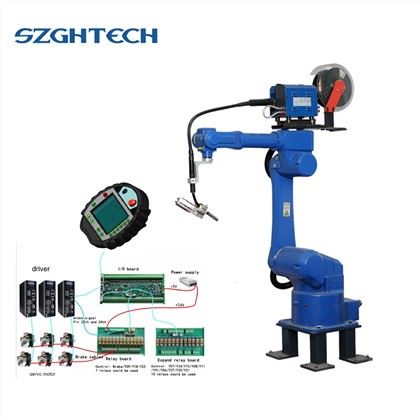Model | SZGH-H1850-B-6 |
| Payload | 6kg |
Reach | 1850mm |
Axes | 6-11 Axes |
Application | welding |
Special Service | 1. We can customize the standard color as you need! |
After Warran | Video technical supports , Online supports |
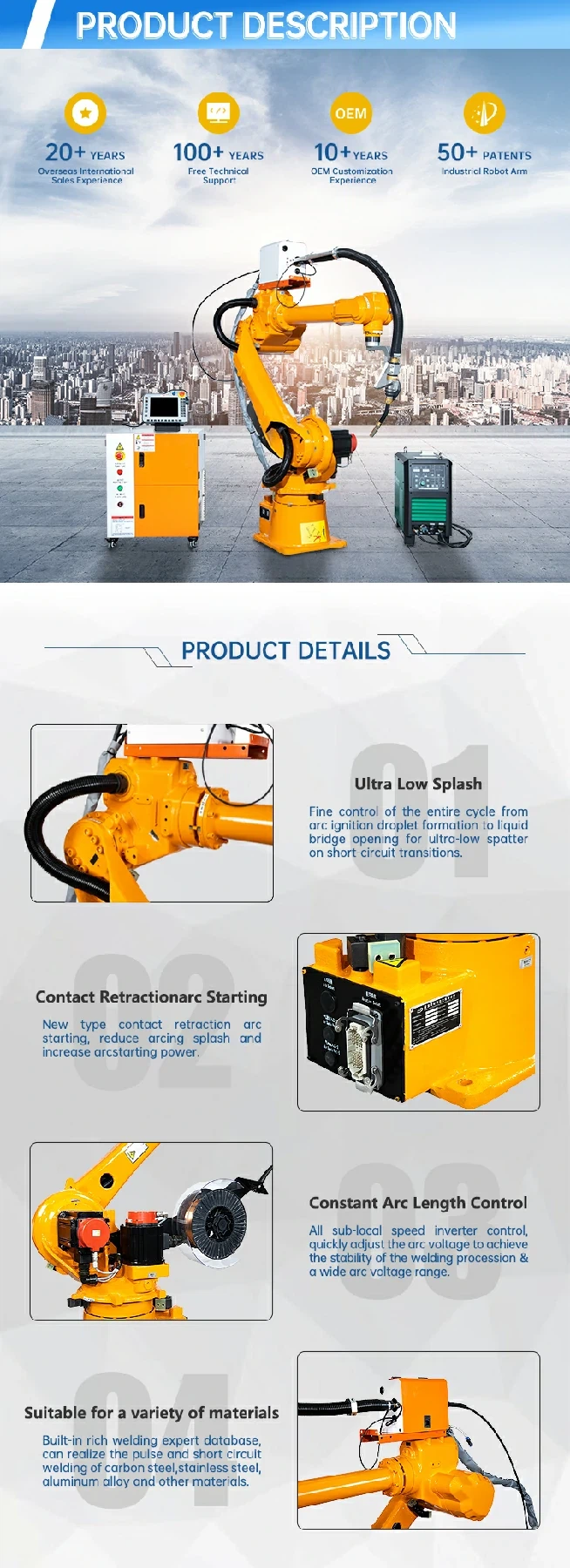
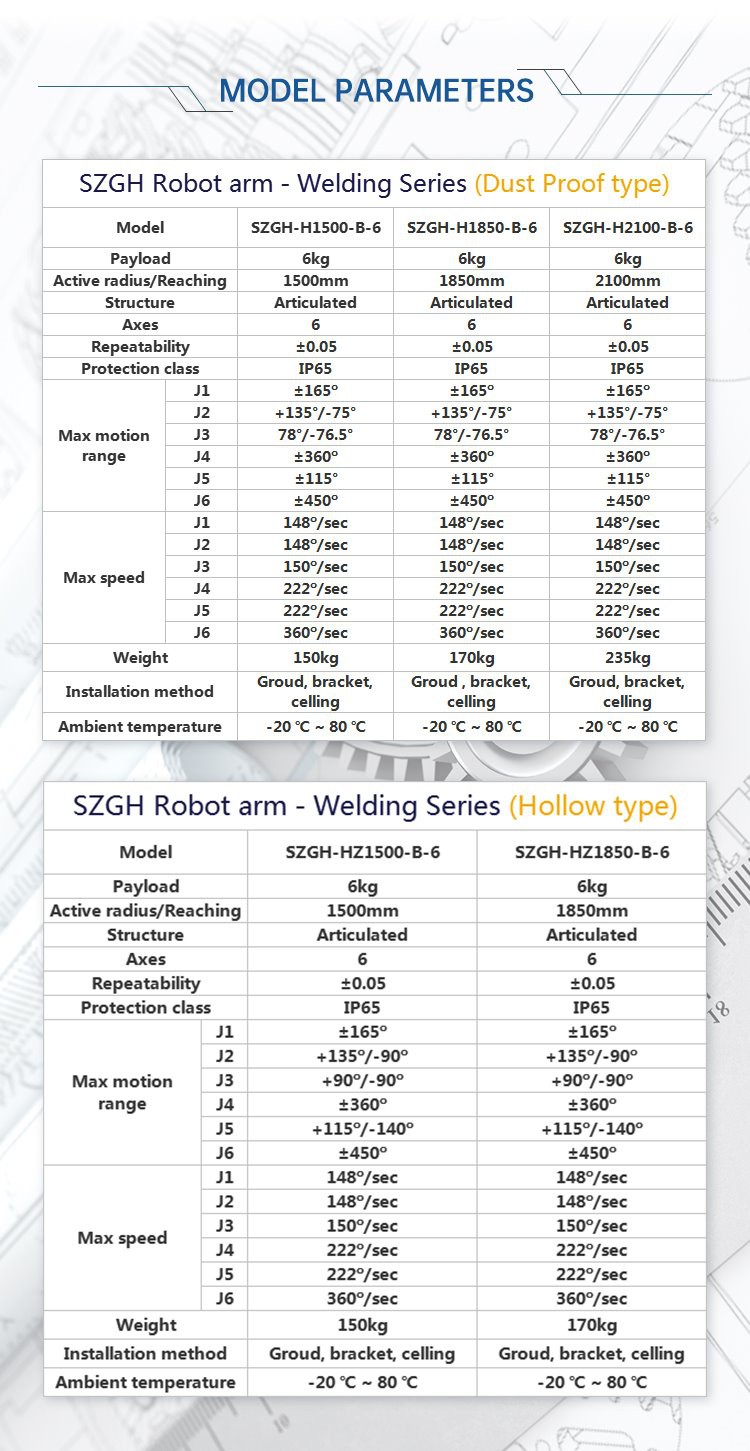
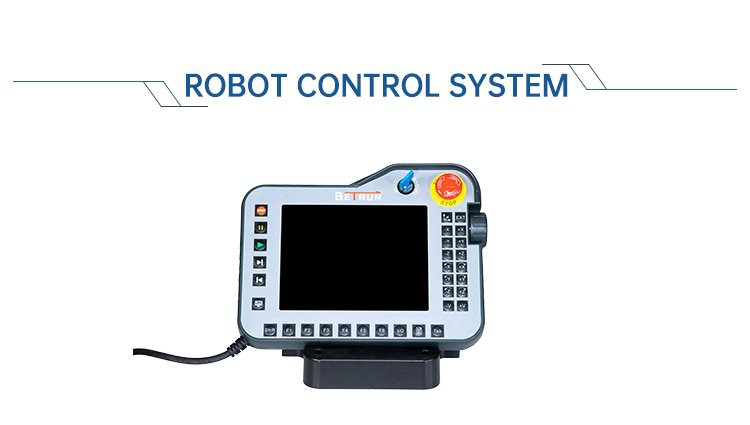
1) Structural optimization algorithm suitable for the body control of various types of structure.
2) Modular setting of functions suitable for diverse applications. Safety module ensures safe production of the robots.
3) Software PLC functions facilitate logic control. Process functions make programming easy.
| Storage | 2 GB |
| No. of controlled axes | 6+6 axes, 6 basic axes +6 external axes |
| Teaching box | Full keyboard+touch screen, mode select switch, safety switch, emergency switch |
| Mode of programming | Online teaching, process programming, teaching by dragging |
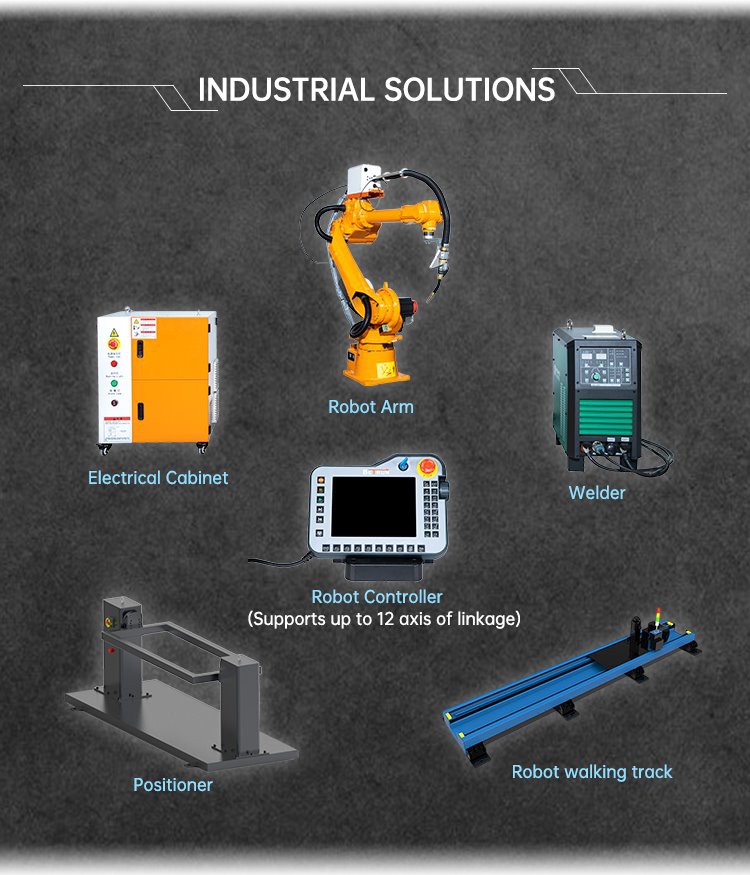
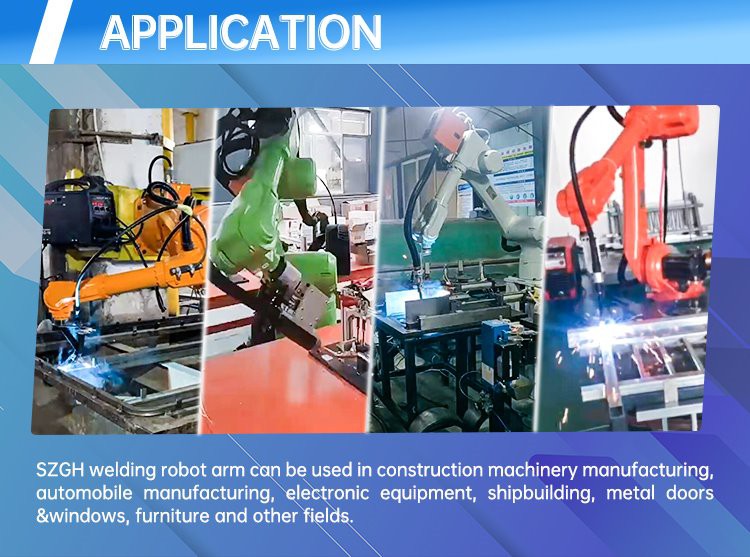
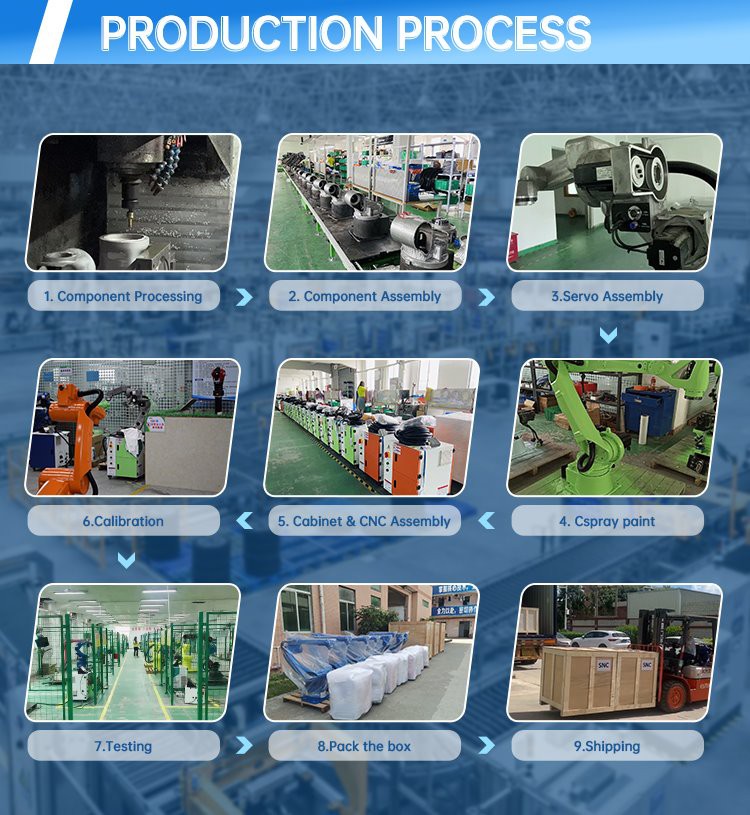
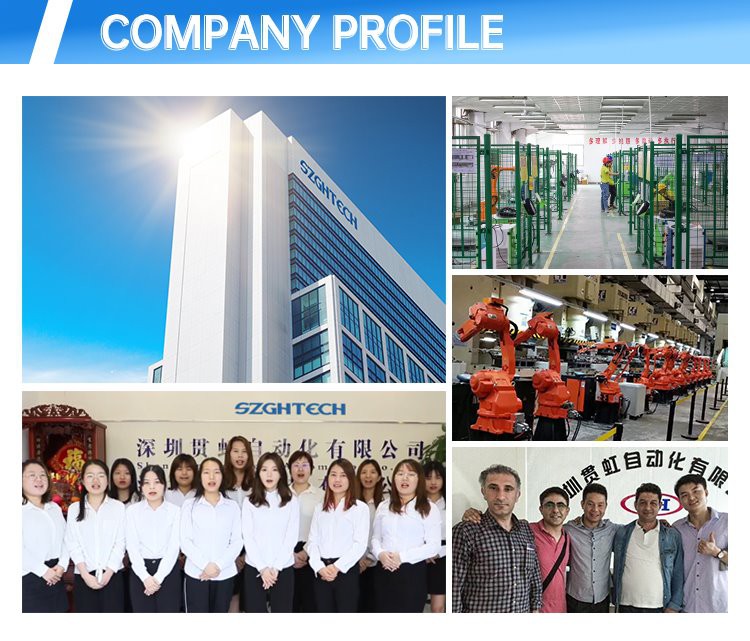
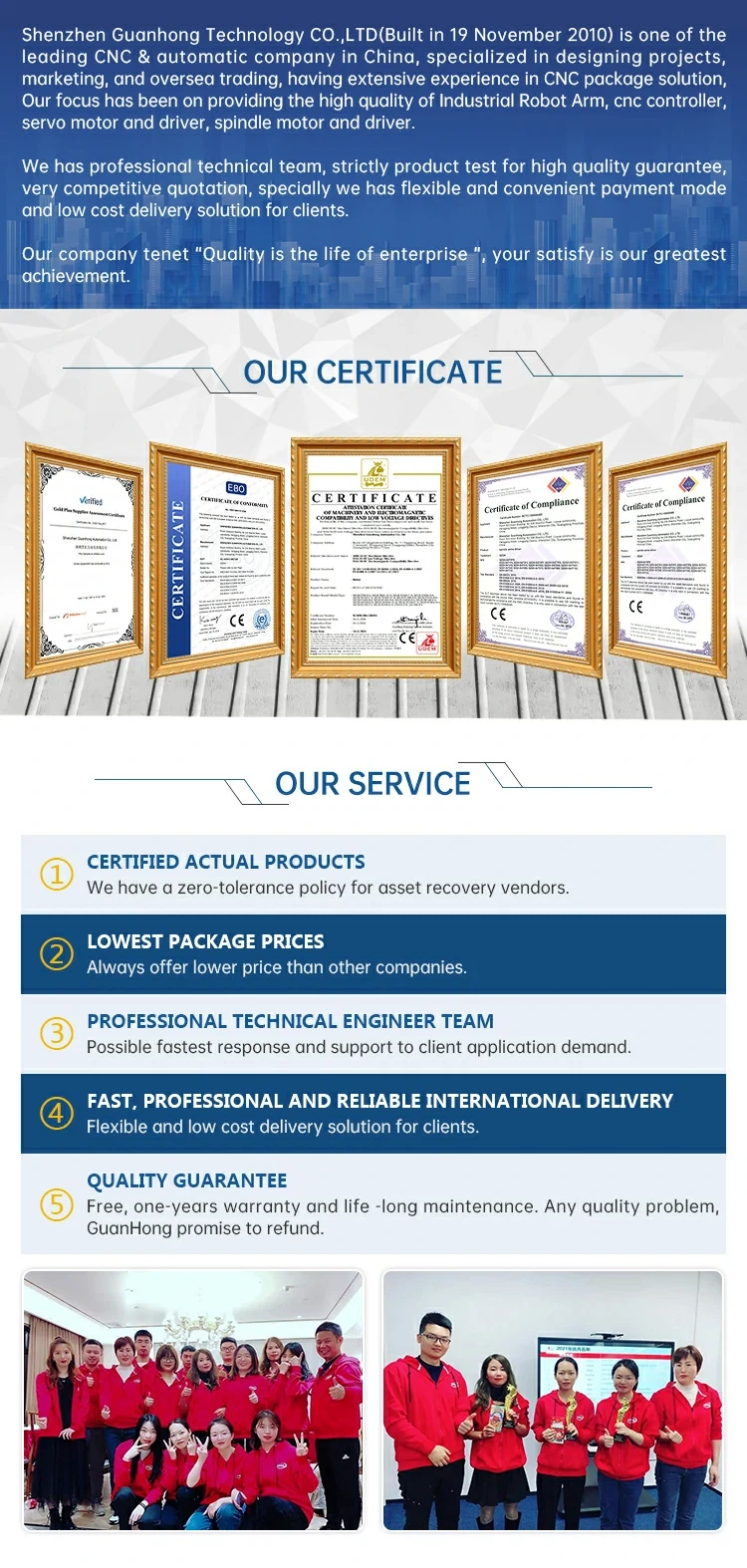
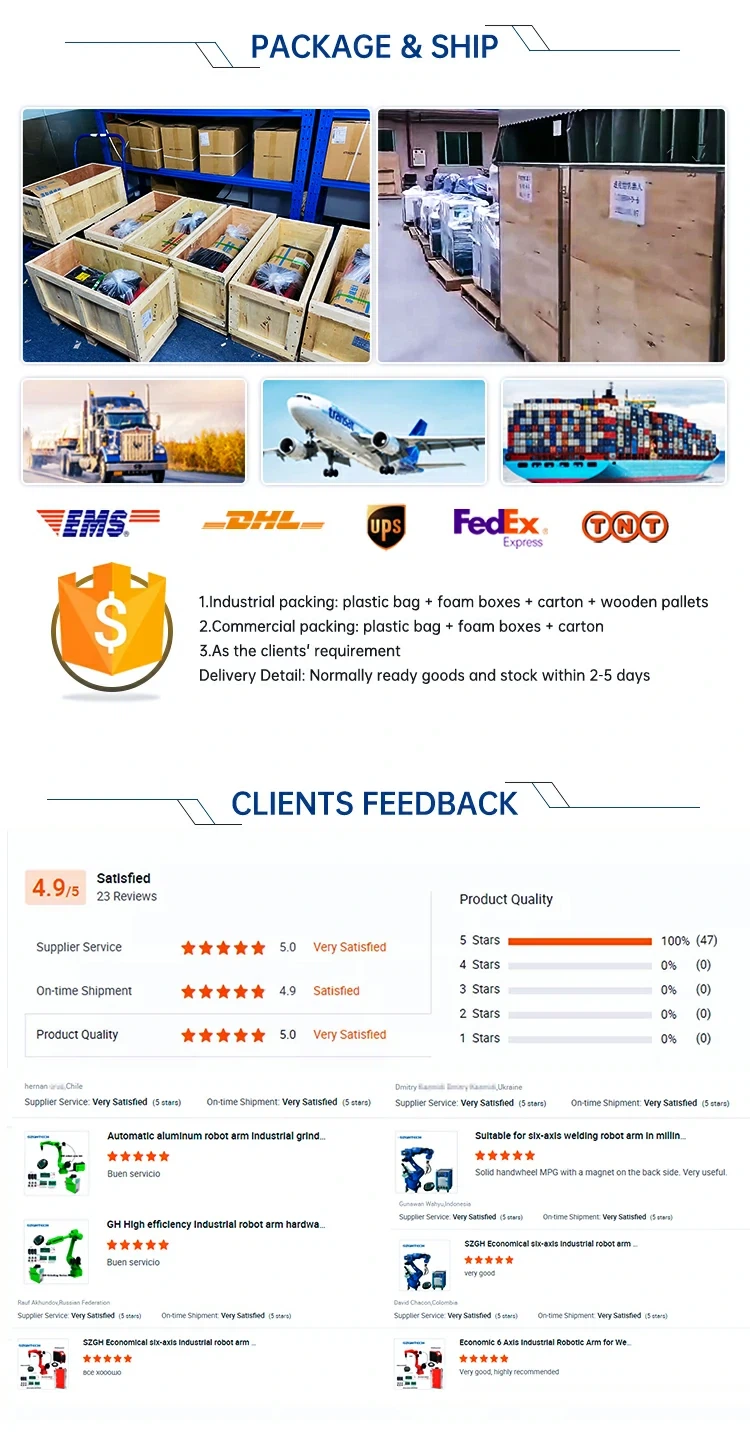

Q: What's your Minimum Order Quantity?
A: Any order quantity is warmly welcomed.
Q: Can I print my Logo on the machine?
A: Yes, sure.
Q: Can you customize the machine for me ?
A: Yes, we can customize according to customer's requirements.
Q: Do you have English Manual for each machinery?
A: Yes. The instruction manual,the test report and other Data Sheets related shall be provided by us.
If you have any questions, pls feel free to contact me below.


